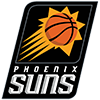When this article gets published, the first edition of this year's RotoWire Roundtable Rankings will either have been recently posted or about to be posted. Those rankings feature three industry veterans whose credibility has long been established and who have received many accolades in Jeff Erickson, Clay Link and Todd Zola, and they also feature me, who is none of those things.
It's an honor to be part of the Roundtable Rankings, and it's also perhaps the exercise that's most sharpened my analysis. If I find myself an outlier on a player compared to my esteemed company, I have two choices: 1) realize I'm wrong and adjust my ranking toward the rest of the pack, or 2) dig deeper and make sure I'm truly confident in my anomalous ranking.
With the introductory space this week, I'll showcase a handful of players with whom I disagree with the consensus. Below, you'll find three tables that compare some of my biggest outliers as compared to their NFBC average draft positions since the lockout ended. Note that my rankings are changing slightly each day as more news comes in, so it's possible that the numbers here don't exactly match those from the Roundtable. I've left off players like Fernando Tatis Jr., whose post-lockout ADP doesn't tell the full story due to an injury that was suffered or revealed in the middle of that time period.
Top-50 Players Who Differ by 10-Plus Spots
| Player | Team | Position | My Rank | Post-lockout ADP Rank | Difference |
|---|---|---|---|---|---|
| Yordan Alvarez |
When this article gets published, the first edition of this year's RotoWire Roundtable Rankings will either have been recently posted or about to be posted. Those rankings feature three industry veterans whose credibility has long been established and who have received many accolades in Jeff Erickson, Clay Link and Todd Zola, and they also feature me, who is none of those things.
It's an honor to be part of the Roundtable Rankings, and it's also perhaps the exercise that's most sharpened my analysis. If I find myself an outlier on a player compared to my esteemed company, I have two choices: 1) realize I'm wrong and adjust my ranking toward the rest of the pack, or 2) dig deeper and make sure I'm truly confident in my anomalous ranking.
With the introductory space this week, I'll showcase a handful of players with whom I disagree with the consensus. Below, you'll find three tables that compare some of my biggest outliers as compared to their NFBC average draft positions since the lockout ended. Note that my rankings are changing slightly each day as more news comes in, so it's possible that the numbers here don't exactly match those from the Roundtable. I've left off players like Fernando Tatis Jr., whose post-lockout ADP doesn't tell the full story due to an injury that was suffered or revealed in the middle of that time period.
Top-50 Players Who Differ by 10-Plus Spots
| Player | Team | Position | My Rank | Post-lockout ADP Rank | Difference |
|---|---|---|---|---|---|
| Yordan Alvarez | HOU | OF | 38 | 23 | 15 |
| Salvador Perez | KC | C | 35 | 25 | 10 |
| Josh Hader | MIL | RP | 41 | 31 | 11 |
| Julio Urias | LAD | SP | 62 | 37 | 25 |
| Aaron Nola | PHI | SP | 25 | 41 | -16 |
| Xander Bogaerts | BOS | SS | 56 | 42 | 14 |
| Pete Alonso | NYM | 1B | 24 | 43 | -19 |
| Tyler O'Neill | STL | OF | 28 | 46 | -18 |
| Lucas Giolito | CHW | SP | 64 | 49 | 24 |
This group is mostly a mix of sluggers and starting pitchers. On the hitting side I'm a bit low on Alvarez, Perez and Bogaerts while pushing up Alonso and O'Neill. In most cases, I'm deviating from the norm due to particularly compelling Statcast data and expected stats. For Bogaerts, for example, I have him three spots behind Corey Seager, while NFBC drafters as a whole prefer Bogaerts by 37 spots. Seager's advantage in the batted-ball data is strong enough that I'm willing to overlook his increased injury risk, which I don't believe to be as severe as others seem to think due to the diverse nature of his injuries. (Tommy John surgery didn't cause him to get hit by a pitch and break his wrist, for example.)
On the pitching side, many of my differences are due to strikeout rates, as pitchers have more direct control over those than over their ERA, WHIP and wins. That's why I'm low on Urias, placing him behind pitchers with stronger numbers in that category like Kevin Gausman, Freddy Peralta and Trevor Rogers.
Top-150 Players Who Differ by 30-Plus Spots
| Player | Team | Position | My Rank | Post-lockout ADP Rank | Difference |
|---|---|---|---|---|---|
| Nolan Arenado | STL | 3B | 113 | 62 | 51 |
| Giancarlo Stanton | NYY | OF | 58 | 91 | -33 |
| Trevor Rogers | MIA | SP | 60 | 97 | -37 |
| Charlie Morton | ATL | SP | 58 | 98 | -40 |
| DJ LeMahieu | NYY | 1B/2B/3B | 158 | 108 | 50 |
| Blake Snell | SDP | SP | 72 | 113 | -41 |
| Rhys Hoskins | PHI | 1B | 74 | 117 | -43 |
| Max Muncy | LAD | 1B/2B | 83 | 119 | -36 |
| Jake Cronenworth | SDP | 1B/2B/SS | 161 | 120 | 41 |
| Chris Bassitt | OAK | SP | 166 | 124 | 42 |
| Jarred Kelenic | SEA | OF | 175 | 133 | 42 |
| Ke'Bryan Hayes | PIT | 3B | 177 | 134 | 43 |
| Joey Votto | CIN | 1B | 79 | 135 | -56 |
| Myles Straw | CLE | OF | 209 | 137 | 72 |
| Austin Meadows | TB | OF | 226 | 138 | 88 |
| Framber Valdez | HOU | SP | 178 | 141 | 37 |
| Ty France | SEA | 1B/2B | 200 | 143 | 57 |
| Eduardo Rodriguez | DET | SP | 109 | 144 | -35 |
| Gleyber Torres | NYY | SS | 192 | 146 | 46 |
| Justin Turner | LAD | 3B | 117 | 147 | -30 |
| Pablo Lopez | MIA | SP | 78 | 148 | -70 |
Sluggers and starters again show up throughout this group, but they're joined by two more categories. The first is contact-over-power guys who don't run much like LeMahieu, Cronenworth and France. Just as I'd rather build a pitching staff around strikeouts rather than ERA, WHIP or wins, I'd rather build my lineup around power than average, as the stat over which a hitter has the most direct control is home runs. The players mentioned above are all fine hitters, but I'm unwilling to pay the market rate for a player whose standout skill can be nullified by bad batted-ball luck. It's completely possible that any of their batting averages could change by 30 points or more despite no underlying skills changes, while an equivalent drop in homers without any skills decline is hard to envision.
The second group of fades is young hitters with hype who just haven't shown anything yet at the highest level. It's possible I miss on a breakout season from Kelenic or Hayes, but both players didn't show any reason to get excited in either their surface stats or batted-ball data.
Top-500 Players Who Differ by 100-Plus Sports
| Player | Team | Position | My Rank | Post-lockout ADP Rank | Difference |
|---|---|---|---|---|---|
| Christian Vazquez | BOS | C | 304 | 194 | 110 |
| Jose Urquidy | HOU | SP | 375 | 220 | 155 |
| Josh Rojas | ARI | 2B/SS/OF | 355 | 235 | 120 |
| Nicky Lopez | KC | SS | 361 | 256 | 105 |
| Aaron Civale | CLE | SP | 417 | 260 | 157 |
| Kyle Hendricks | CHC | SP | 437 | 264 | 173 |
| Joey Bart | SFG | C | 383 | 268 | 115 |
| Tommy Pham | FA | OF | 147 | 282 | -135 |
| Marco Gonzales | SEA | SP | 429 | 303 | 126 |
| Cavan Biggio | TOR | 3B | 419 | 305 | 114 |
| Zach Plesac | CLE | SP | 442 | 312 | 130 |
| Dinelson Lamet | SD | RP | 498 | 335 | 163 |
| Carlos Hernandez | KC | SP | 463 | 343 | 120 |
| Manuel Margot | TB | OF | 250 | 351 | -101 |
| Jonathan Loaisiga | NYY | RP | 527 | 353 | 174 |
| Evan Longoria | SFG | 3B | 235 | 357 | -122 |
| Ian Kennedy | ARI | RP | 553 | 369 | 184 |
| Drew Steckenrider | SEA | RP | 556 | 376 | 180 |
| James Karinchak | CLE | RP | 533 | 396 | 137 |
| Zach Eflin | PHI | SP | 295 | 397 | -102 |
| Bobby Bradley | CLE | 1B | 294 | 408 | -114 |
| JT Brubaker | PIT | SP | 302 | 420 | -118 |
| Ryan Yarbrough | TB | SP | 555 | 431 | 124 |
| Gavin Sheets | CHW | DH | 282 | 443 | -161 |
| Dylan Moore | SEA | 2B/OF | 333 | 450 | -117 |
| Aaron Hicks | NYY | OF | 323 | 453 | -130 |
| J.D. Davis | NYM | 3B | 349 | 456 | -107 |
| Robinson Cano | NYM | 2B | 293 | 462 | -169 |
| Jake Fraley | CIN | OF | 251 | 464 | -213 |
| Brad Miller | TEX | 1B/OF | 298 | 470 | -172 |
| Daniel Hudson | LAD | RP | 325 | 495 | -170 |
This large group continues the themes of the previous two groups, at least in terms of my fades. I just don't see a reason to be interested in a player like Urquidy, who allowed a lot of contact (21.3 percent strikeout rate) and couldn't keep that contact on the ground (32.2 percent groundball rate). Most of my pitcher fades in this group are similar. Among the hitters, you'll see more batters with very poor batted-ball data, like Lopez (0.7 percent barrel rate) and Rojas (4.8 percent barrel rate with a 24.9 percent strikeout rate). The guys I'm higher on include a number of flawed base stealers such as Pham, Margot and Moore.
Feel free to tell my why I'm wrong about any of the above in the comments below. For now, we'll move on to a discussion of the biggest movers from the latter part of the post-lockout frenzy.
RISER
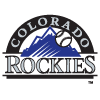 Kris Bryant, 3B/OF, Rockies: Did you know that it benefits a hitter to move to Coors Field, by far the most hitter-friendly park in the league? Insights like that are why you subscribe to RotoWire, I'm sure. Bryant rebounded from an injury-filled 2020 season in which he hit .206/.293/.351 with four homers in 34 games with a 2021 campaign that looked like the Bryant we'd come to expect. He batted .265/.353/.481 with 25 homers and 10 steals, the most since his rookie season. That bounce-back came with a 10.3 percent barrel rate, his highest since 2016. Bryant looked like a perennial MVP his first three years, winning the award in his sophomore season, before falling to merely All-Star form. As he heads into his 30s, he should continue his All-Star level according to his park-adjusted numbers, but his raw stats could be as good as the MVP version given the boost from Coors Field.
Kris Bryant, 3B/OF, Rockies: Did you know that it benefits a hitter to move to Coors Field, by far the most hitter-friendly park in the league? Insights like that are why you subscribe to RotoWire, I'm sure. Bryant rebounded from an injury-filled 2020 season in which he hit .206/.293/.351 with four homers in 34 games with a 2021 campaign that looked like the Bryant we'd come to expect. He batted .265/.353/.481 with 25 homers and 10 steals, the most since his rookie season. That bounce-back came with a 10.3 percent barrel rate, his highest since 2016. Bryant looked like a perennial MVP his first three years, winning the award in his sophomore season, before falling to merely All-Star form. As he heads into his 30s, he should continue his All-Star level according to his park-adjusted numbers, but his raw stats could be as good as the MVP version given the boost from Coors Field.
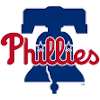 Nick Castellanos, Kyle Schwarber, OF, Phillies: The Phillies entered winter with a clear need for a big bat in left field and wound up signing two for the price of one. Kris Bryant may have been the team's top target to fill that hole, but at $182 million, he wound up costing more than Castellanos ($100 million) and Schwarber ($79 million) combined. Their new home, Citizens Bank Park, is hitter friendly but not necessarily more so than the parks they're coming from. It ranks sixth in terms of boosting wOBA, per Statcast, which is actually lower than Great American Ball Park (third), Nationals Park (fifth) and Fenway Park (second), the places Castellanos and Schwarber called home last year. Schwarber could at least see a power boost compared to Fenway Park, which is tough for lefties to hit the ball out of, but overall, their new home is not necessarily an upgrade compared to where they played in 2021.
Nick Castellanos, Kyle Schwarber, OF, Phillies: The Phillies entered winter with a clear need for a big bat in left field and wound up signing two for the price of one. Kris Bryant may have been the team's top target to fill that hole, but at $182 million, he wound up costing more than Castellanos ($100 million) and Schwarber ($79 million) combined. Their new home, Citizens Bank Park, is hitter friendly but not necessarily more so than the parks they're coming from. It ranks sixth in terms of boosting wOBA, per Statcast, which is actually lower than Great American Ball Park (third), Nationals Park (fifth) and Fenway Park (second), the places Castellanos and Schwarber called home last year. Schwarber could at least see a power boost compared to Fenway Park, which is tough for lefties to hit the ball out of, but overall, their new home is not necessarily an upgrade compared to where they played in 2021.
Still, it's hard not to get excited about both batters, who will be in a strong lineup in a great park and who are both coming off strong seasons. Castellanos posted career bests in strikeout rate (20.7 percent) and batting average (.309) and didn't sacrifice power, as his 10.6 percent barrel rate was in line with his career numbers and helped him to a career-high 34 homers. Schwarber's 2021 season is more or less the inverse. He raised his barrel rate to 17.5 percent (which would have ranked eighth in the league, he had qualified) and did so without sacrificing contact, as his 27.0 percent strikeout rate was a hair better than his career mark.
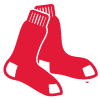 Tanner Houck, SP, Red Sox: Houck only threw 69 innings last season, as he spent most of the first half in the minors and was frequently limited to fewer than five frames in a start, but it's hard not to get excited about what he accomplished. He cruised to a 3.52 ERA, backed with a 30.5 percent strikeout rate, 7.4 percent walk rate and 48.2 percent groundball rate. Among pitchers with at least 10 starts, only Corbin Burnes met all three of those thresholds. While that means Houck could afford to regress a bit with a bigger workload and still remain valuable, his price is somewhat suppressed due to role concerns. The Red Sox have six viable starters after bringing in Rich Hill and Michael Wacha, and potentially seven in Garrett Whitlock. But after Chris Sale's ribcage injury, manager Alex Cora said Houck is all but guaranteed a place in the rotation. That could change once Sale returns, but I'd bet on Houck pitching well enough to keep the job.
Tanner Houck, SP, Red Sox: Houck only threw 69 innings last season, as he spent most of the first half in the minors and was frequently limited to fewer than five frames in a start, but it's hard not to get excited about what he accomplished. He cruised to a 3.52 ERA, backed with a 30.5 percent strikeout rate, 7.4 percent walk rate and 48.2 percent groundball rate. Among pitchers with at least 10 starts, only Corbin Burnes met all three of those thresholds. While that means Houck could afford to regress a bit with a bigger workload and still remain valuable, his price is somewhat suppressed due to role concerns. The Red Sox have six viable starters after bringing in Rich Hill and Michael Wacha, and potentially seven in Garrett Whitlock. But after Chris Sale's ribcage injury, manager Alex Cora said Houck is all but guaranteed a place in the rotation. That could change once Sale returns, but I'd bet on Houck pitching well enough to keep the job.
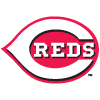 Jake Fraley, OF, Reds: While Bryant's park change has generated the most chatter, the hipster in me is more excited about Fraley's move to Cincinnati. Looking at his skillset, independent of his park and role, you don't have to squint hard to see a 20/20 player, as he hit nine homers and stole 10 bases in 265 plate appearances last season. His .210 average can be blamed in part on a 26.8 percent strikeout rate, though he also walked an excellent 17.4 percent of the time. That suggests he has a good eye for the zone, giving him a building block to make more contact. While the skills are intriguing for a late-round outfielder, he didn't have a path in a crowded Mariners' outfield to everyday at-bats, half of which would have come in a pitcher-friendly park. The move from Seattle to Cincinnati is one of the biggest park upgrades possible, and he's also now on a capitulating team that should offer plenty of playing time.
Jake Fraley, OF, Reds: While Bryant's park change has generated the most chatter, the hipster in me is more excited about Fraley's move to Cincinnati. Looking at his skillset, independent of his park and role, you don't have to squint hard to see a 20/20 player, as he hit nine homers and stole 10 bases in 265 plate appearances last season. His .210 average can be blamed in part on a 26.8 percent strikeout rate, though he also walked an excellent 17.4 percent of the time. That suggests he has a good eye for the zone, giving him a building block to make more contact. While the skills are intriguing for a late-round outfielder, he didn't have a path in a crowded Mariners' outfield to everyday at-bats, half of which would have come in a pitcher-friendly park. The move from Seattle to Cincinnati is one of the biggest park upgrades possible, and he's also now on a capitulating team that should offer plenty of playing time.
FALLERS
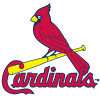 Jack Flaherty, SP, Cardinals;
Jack Flaherty, SP, Cardinals;  Chris Sale, SP, Red Sox: We'll group these injured aces, since their stories are similar. Flaherty received a PRP injection in his inflamed right shoulder and won't throw for at least two weeks. Even if he resumes his throwing program immediately thereafter and has no setbacks, he'll still have to go through basically a full spring progression, which will start just days before Opening Day. It would be surprising if he misses less than a month. Sale's timeline isn't as clear. He'll miss at least the start of the season with a stress fracture in his ribcage, as his return is uncertain. More worrisome are the pitchers' recent injury histories. Flaherty only made 15 starts last season due to oblique and shoulder injuries. Sale returned late last season after Tommy John surgery, which kept him out all 2020. In that context, Flaherty's injury is far more worrisome, as it's in the same place as one of his previous injuries, whereas Sale's is seemingly unrelated. But considering Sale is entering his age-33 season, it's hard to be confident in drafting him when he's already injured.
Chris Sale, SP, Red Sox: We'll group these injured aces, since their stories are similar. Flaherty received a PRP injection in his inflamed right shoulder and won't throw for at least two weeks. Even if he resumes his throwing program immediately thereafter and has no setbacks, he'll still have to go through basically a full spring progression, which will start just days before Opening Day. It would be surprising if he misses less than a month. Sale's timeline isn't as clear. He'll miss at least the start of the season with a stress fracture in his ribcage, as his return is uncertain. More worrisome are the pitchers' recent injury histories. Flaherty only made 15 starts last season due to oblique and shoulder injuries. Sale returned late last season after Tommy John surgery, which kept him out all 2020. In that context, Flaherty's injury is far more worrisome, as it's in the same place as one of his previous injuries, whereas Sale's is seemingly unrelated. But considering Sale is entering his age-33 season, it's hard to be confident in drafting him when he's already injured.
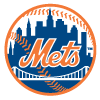 Starling Marte, OF, Mets: Speed guys cost far more than they would if they didn't contribute so much in the rarest offensive category. With the older speed guys, the fear is always that this is the year their legs give out, leaving a player with bland numbers. I'd always rather be a year too early than a year too late in fading that sort of player, especially those who cost a second-round pick like Marte. While the news is far from terrible, there are warning signs this could be the season the 33-year-old falls from fantasy stardom. He missed a workout last Monday with a sore oblique and was only hitting off a tee a week later. It's certainly possible he recovers soon, making his inclusion here look silly, but it's still prudent to be nervous given his age and the fragility of his type of profile. There's a chance he's not fully himself this season and winds up with about 20 steals, making him look far more like Isiah Kiner-Falefa or Raimel Tapia than the star he's being drafted as.
Starling Marte, OF, Mets: Speed guys cost far more than they would if they didn't contribute so much in the rarest offensive category. With the older speed guys, the fear is always that this is the year their legs give out, leaving a player with bland numbers. I'd always rather be a year too early than a year too late in fading that sort of player, especially those who cost a second-round pick like Marte. While the news is far from terrible, there are warning signs this could be the season the 33-year-old falls from fantasy stardom. He missed a workout last Monday with a sore oblique and was only hitting off a tee a week later. It's certainly possible he recovers soon, making his inclusion here look silly, but it's still prudent to be nervous given his age and the fragility of his type of profile. There's a chance he's not fully himself this season and winds up with about 20 steals, making him look far more like Isiah Kiner-Falefa or Raimel Tapia than the star he's being drafted as.
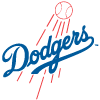 Blake Treinen, RP, Dodgers: Two big pieces of news affected Treinen's value last week. On Wednesday, manager Dave Roberts said the team would use a committee approach in the ninth inning. Two days later, Kenley Jansen signed with Atlanta. Whether that amounts to a rise or a fall in your eyes depends on where you had Treinen pegged previously. If you assumed Jansen would re-sign, then Treinen now looks like the head of a committee rather than a setup man. If you assumed Jansen would not return and Treinen would close, he's a clear faller. Given where he's been drafted, I'm putting him here. He still has value as the top option in a committee, especially with true closers increasingly rare, but it's not obvious that he's a clear tier above the Dodgers' other options. Daniel Hudson also has closing experience and was arguably just as good as Treinen last season — he beat Treinen's strikeout rate by six points, and ERA estimators are split as to which pitcher deserved a better ERA. Hudson is completely free, with an NFBC ADP of 616.5, while Treinen's is 176.0, a gap that massively overstates the difference between the relievers.
Blake Treinen, RP, Dodgers: Two big pieces of news affected Treinen's value last week. On Wednesday, manager Dave Roberts said the team would use a committee approach in the ninth inning. Two days later, Kenley Jansen signed with Atlanta. Whether that amounts to a rise or a fall in your eyes depends on where you had Treinen pegged previously. If you assumed Jansen would re-sign, then Treinen now looks like the head of a committee rather than a setup man. If you assumed Jansen would not return and Treinen would close, he's a clear faller. Given where he's been drafted, I'm putting him here. He still has value as the top option in a committee, especially with true closers increasingly rare, but it's not obvious that he's a clear tier above the Dodgers' other options. Daniel Hudson also has closing experience and was arguably just as good as Treinen last season — he beat Treinen's strikeout rate by six points, and ERA estimators are split as to which pitcher deserved a better ERA. Hudson is completely free, with an NFBC ADP of 616.5, while Treinen's is 176.0, a gap that massively overstates the difference between the relievers.
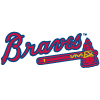 Will Smith, RP, Atlanta: Kenley Jansen's move to Atlanta is a clear negative for Smith. The veteran lefty recorded 37 of the defending champions' 40 saves last season, and while Atlanta did enter the offseason with talented relievers like A.J. Minter and Tyler Matzek, Smith's job didn't appear to be under threat. With Jansen getting $16 million this season, however, there is seemingly no ambiguity about whether he was brought in to close, evaporating nearly all of Smith's value. Those looking at Smith's positives could point to the fact that he and Jansen nearly tied in strikeout rate last season while Smith's walk rate was three points lower. But unless there's a battle for the closer position, that likely won't matter. Smith could still reclaim the job if Jansen falters, which absolutely could happen in Jansen's age-34 season, but that still leaves the southpaw as nothing more than an endgame play.
Will Smith, RP, Atlanta: Kenley Jansen's move to Atlanta is a clear negative for Smith. The veteran lefty recorded 37 of the defending champions' 40 saves last season, and while Atlanta did enter the offseason with talented relievers like A.J. Minter and Tyler Matzek, Smith's job didn't appear to be under threat. With Jansen getting $16 million this season, however, there is seemingly no ambiguity about whether he was brought in to close, evaporating nearly all of Smith's value. Those looking at Smith's positives could point to the fact that he and Jansen nearly tied in strikeout rate last season while Smith's walk rate was three points lower. But unless there's a battle for the closer position, that likely won't matter. Smith could still reclaim the job if Jansen falters, which absolutely could happen in Jansen's age-34 season, but that still leaves the southpaw as nothing more than an endgame play.
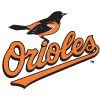 Adley Rutschman, C, Orioles: Before he suffered a triceps strain, Rutschmann looked like an interesting test of the new service-time rules. The top two Rookie of the Year finishers in both leagues automatically get a year of service time, which should incentivize teams to call up a prospect right away if he's a favorite for the award. What's more, teams receive draft-pick compensation if a rookie who makes their Opening Day roster finishes top three in Rookie of the Year voting. Of course, teams could also deliberately keep a player in the minors long enough that he has no chance of earning votes. Rutschman, a premier prospect, seemed to be either a candidate to get called up on Opening Day or to be held down for multiple months. Unfortunately, the latter scenario is now much more in play following his injury. The team has given an optimistic timeline of 2-to-3 weeks, but a longer absence would hardly surprise. He's now all but guaranteed to not make the Opening Day roster, which gives the Orioles a strong incentive to keep him in Triple-A long enough to clear the Super Two deadline (sometime in early June) and to ensure he won't finish high in award voting.
Adley Rutschman, C, Orioles: Before he suffered a triceps strain, Rutschmann looked like an interesting test of the new service-time rules. The top two Rookie of the Year finishers in both leagues automatically get a year of service time, which should incentivize teams to call up a prospect right away if he's a favorite for the award. What's more, teams receive draft-pick compensation if a rookie who makes their Opening Day roster finishes top three in Rookie of the Year voting. Of course, teams could also deliberately keep a player in the minors long enough that he has no chance of earning votes. Rutschman, a premier prospect, seemed to be either a candidate to get called up on Opening Day or to be held down for multiple months. Unfortunately, the latter scenario is now much more in play following his injury. The team has given an optimistic timeline of 2-to-3 weeks, but a longer absence would hardly surprise. He's now all but guaranteed to not make the Opening Day roster, which gives the Orioles a strong incentive to keep him in Triple-A long enough to clear the Super Two deadline (sometime in early June) and to ensure he won't finish high in award voting.

















